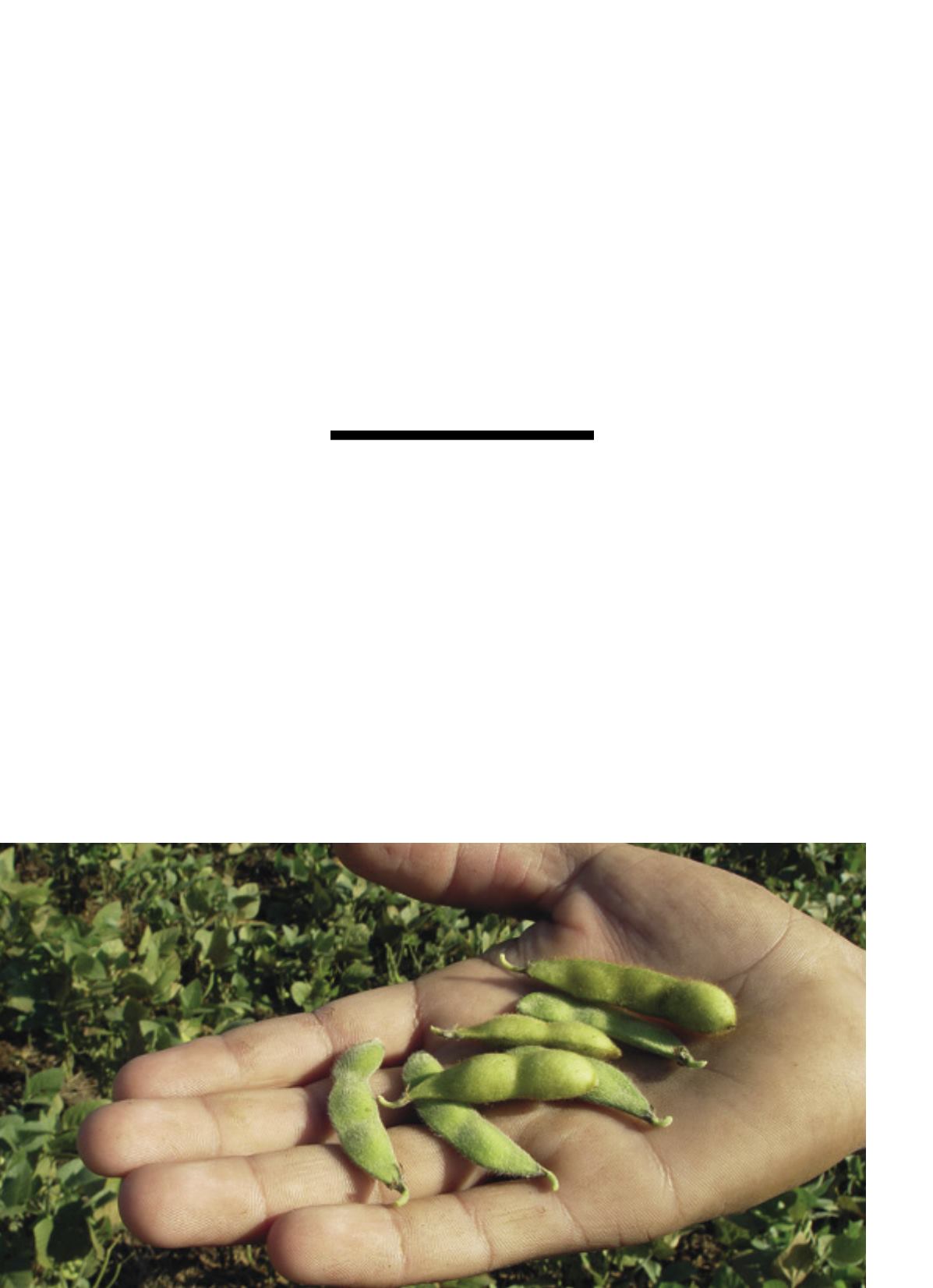
Robispierre Giuliani
77
Remaining
topossibledanger
Asian Soybean Rust gives
rise to a newand pioneer
phytosanitary program in
WesternBahia, consisting
in closelymonitoring the
pest in the field
The region of Western Bahia, which has stood out from the other re-
gions in its fight against Asian Soybean Rust with a pioneer program, in
2003 and 2004, is again facing, with an avant-garde impetus, new situ-
ations regarding this disease. For the 2017/18 growing season, the re-
gion adhered to an initiative referred to as “Alert to Asian Soybean Rust”,
whereby onemore regional partnershipwas established to follow close-
ly the problem and start solving it as soon as possible. This partnership
comprises the Bahia Association of Farmers and Irrigators (Aiba), the Ba-
hia Association of Cotton Producers (Aba-
pa), Bahia Foundation, the rural unions of
Barreiras and Luís Eduardo Magalhães, and
the newly created Soybean Producers’ As-
sociation (Aprosoja) of Bahia.
New facts, like the recent incidence of
a fungus mutant, the low efficiency of phy-
tosanitary products and the low amount
of products (12) and active ingredients (3),
which offer more resistance, while there is no immediate perspective
for new alternatives, narrowed the conditions for facing the situation,
and began to require a series of actions of appropriate control andman-
agement, says agronomic engineer Armando Sá Nascimento, fromAiba,
coordinator of the program. One of them consists in the adaptation of
the so-called fallow period (interval between crops to break the cycle
of pests), which used to take place from July 15 to October 15 and now
takes place from July 1 to October 7).
In parallel, the coordinator emphasizes, it is absolutely necessary to
eliminate thevolunteer plantsandcomplywith thevegetableplantingcal-
endar, which extends fromOctober 15 to January 15, with the purpose to
reduce the number of applications of the product, as any excess is a deter-
Partnershipbetween
entities, producers and
technicians strengthens
control andmanagement
mining factor in strengthening the resistance
against it. A crucial point, in his view, is pest
monitoring in the field, under the responsibil-
ity of the farmers, encouraged by the 22 exist-
ing regional nuclei, alongwith the technicians
and professionals engaged in rural extension
services, in an attempt to cover the entire soy-
bean area. To this end, a new registering plan
is now being inserted by Aiba, so as to delimit
precisely the scope of the crop and its control.
Within this program, insists Armando
Sá, the region resumes, once more as a pio-
neering initiative, the research works joint-
ly with Embrapa, within the agreement with
Bahia Foundation, in three main operating
lines: network trials to test the efficiency
of the fungicides, rust monitoring and oth-
er pests between crops, and the manage-
ment and fungicide resistance project, with
the participation of the industry of the sec-
tor. There will equally be training on appli-
cation technologies and, in general, there is
concern about synchronizing the work with
the neighboring states, a measure that plays
a fundamental role in the transmission of the
fungus. The cost amounts to R$ 2 million (R$
1.56 per planted hectare) and the coordina-
tor reiterates that the adoption of the prac-
tices is essential for maintaining the activity.
alert


